
*
Will the film adaptation of the international musical stage smash Les Misérables, due for release in movie theatres on Dec. 25, drastically, suddenly, miraculously prompt the movie industry to churn out movie-musicals again, as they did in The Golden Age? This question gets kicked around every time a studio decides to flirt with the genre — a genre, mind you, that has not flourished with consistency since the 1950s, when Fred Astaire and Gene Kelly were dancing on ceilings, roller skates, trash-can lids and in the rain for M-G-M.
Did the hit films "West Side Story," "The Sound of Music," "Cabaret," "Oliver!," "Grease," "Chicago," "Hairspray" and "Dreamgirls" transform the industry into a Song-and-Dance Factory, as it was in the '30s, '40s and '50s? They didn't. Tastes change, and the moviegoing public lost its taste for a steady diet of film musicals long ago.
Let's not be obsessed with the wearying question of the reviving of the old form — do you really expect a dozen musicals to be released a year? Is there enough content and imagination to support such a blossoming today?
| |
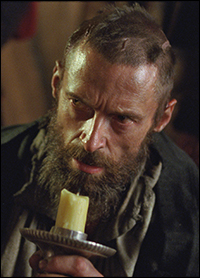 |
|
| Jackman in "Les Misérables." | ||
| Universal Pictures |
Certainly a smashzilla "Les Miz" film would strengthen the potential for a screen version of Miss Saigon, the hit musical by the same writers (Alain Boublil and Claude-Michel Schönberg), but that's another story.
Musicals are niche pix. Period. But, when they shine, they shine. And we who believe in the power of songs that tell stories will be there, with popcorn in hand, hoping for the best. Hoping for something better than "Annie."
Which leads us to "Les Misérables," which has a screenplay credited to William Nicholson ("Elizabeth: The Golden Age," "Nell" and the Oscar-nominated "Shadowlands" and "Gladiator") and the 1985 London show's original writers Alain Boublil, Claude-Michel Schonberg (the composer) and English lyricist Herbert Kretzmer.
The following column includes spoilers, so if you have not seen the movie, and want to be surprised, you're reading the following at your own risk.
| |
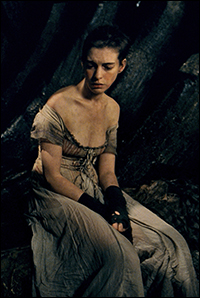 |
|
| Anne Hathaway | ||
| Universal Pictures |
Cut the recitative and just keep The Big Numbers? Turn the recit into spoken word? Inject the major songs into a more traditional historical screenplay?
In the end, what's on screen is basically a filmed version of the show we know, with internal cuts in verses, recit and songs — though there is still more recit than perhaps an average moviegoer wants to hear in a 157-minute film (the final running time).
There are also a few additions, for storytelling, clarity and gap-filling, including an Oscar-eligible new number called "Suddenly," a song for Valjean as he whisks his new daughter away from the Thenardiers in a coach — this Valjean sings a lot as he rides in horse-drawn carriages (he's stuck in one through "One Day More"). The topic of "Suddenly" is his new role as father to the child Cosette. (Here's a video feature about its intent.)
Also added: When Javert takes a post as new chief of police in Montreuil-sur-Mer, where Valjean is Mayor Madeleine, he presents himself to his boss, in song.
| |
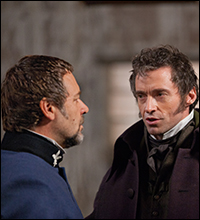 |
|
| Russell Crowe and Hugh Jackman | ||
| Universal Pictures |
How these songs are realized by Hooper (who is passionate about woozy camera angles and extreme close-ups, as previously demonstrated in his TV miniseries "John Adams") will stir much debate among the musical's diehard fans. Are the songs "opened up" and "filmic" enough? Do the renditions hew too closely to the original? Do they stray too far away? Do they move, physically? Where the heck did the joyous wedding dance go? Why did they cut Thenardier's sewer song? (Wait, that was one of the good cuts!)
I personally missed a favorite reveal that happens in a bit of the recit/verse to "A Little Fall of Rain." It's absolutely not necessary on film, but it's a moment I've always loved on stage for reasons I can't explain. Cradling his stricken friend at the barricade, Marius sings:
Eponine, what's wrong?
There's something wet upon your hair.
Eponine, you're hurt, you need some help —
Oh, God, it's everywhere!
Yes, it's prosaic and redundant, visually, but when I first saw him peel back her jacket to reveal her covered in blood, I got chills. I still do, just thinking about it.
| |
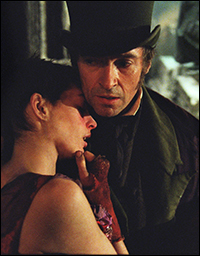 |
|
| Anne Hathaway and Hugh Jackman | ||
| Universal Pictures |
Hugh Jackman, the Tony Award-winning Broadway star of The Boy From Oz, Back on Broadway and A Steady Rain — and internationally known as Hollywood super-hero Wolverine — is unrecognizable as Jean Valjean at the beginning of "Les Miz": gaunt, bruised, bearded, red-eyed, scarred and showing a crudely shaved head. It's an arresting, daring performance throughout. Vocally, Jackman's baritone is strained and pained and nasal, as if fear has poisoned Valjean's ability to express himself with beauty or softness — and that's exactly the case for this iconic character in world literature (it all goes back to Victor Hugo's 1862 novel). Fans may miss a gorgeous and traditional sound here from both Jackman (in a traditionally tenor role) and Russell Crowe as Inspector Javert. Redmayne, Amanda Seyfried as Cosette, Aaron Tveit as Enjolras and Samantha Barks as Eponine fill any possible vocal void. They offer performances very much in the tradition of the stage musical.
| |
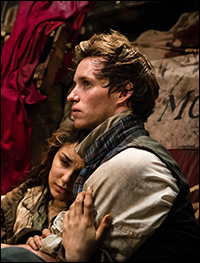 |
|
| Samantha Barks and Eddie Redmayne | ||
| Universal Pictures |
The idea is an extension of the approach employed when producer Mackintosh hired new directors, designers, orchestrators and music directors to reinvent Les Miz on stage for its 25th-anniversary U.K. tour. That version is, musically, much more conversational than the original (more formal and vocally legit) 1985 version of the show, which is still running in London's West End. The tour's new orchestrations are by Christopher Jahnke, with musical supervision by Stephen Brooker. Mackintosh enlisted Brooker to be the film's musical director. "The complete new orchestration that we've done [for the stage]…is actually the basis of the film," Mackintosh told Playbill.com Nov. 30, adding that there were other music partners on the film (Anne Dudley is orchestrator-music producer, Stephen Metcalfe is orchestrator and Becky Bentham is music supervisor).
That revised stage version — directed by Laurence Connor and James Powell — is currently touring the U.S.; Mackintosh told Playbill.com that he's going to bring it to Broadway in the coming seasons (something Playbill reported back in September).
| |
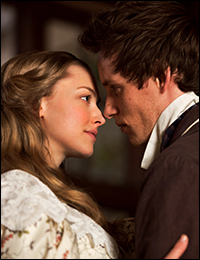 |
|
| Amanda Seyfried and Eddie Redmayne | ||
| Photo by Universal Pictures |
The women's workclothes at Monsieur Madeleine's factory, from which Fantine is sacked, are all blue. ("Right, my girl — on your way!" spits Michael Jibson in a yeasty brief appearance as the Foreman; he's an Olivier Award nominee who played Charles Lindbergh in Maltby & Shire's Take Flight and Addison Mizner in Stephen Sondheim and John Weidman's Road Show, both at the Menier Chocolate Factory in London.)
At the top of the film, we first see Jean Valjean wearing red (for guilty!) as a convict in Toulon. He's among hundreds of others pulling on ropes and hauling a damaged vessel into dry dock for repairs as they sing "Look Down." This scene is a change from the stage musical, which has the convicts smashing rocks (in 1985) and rowing oars in a boat (in the 25th-anniversary tour).
Offering yet another shade of red, Fantine sheds her factory duds to reveal a pink dress. Hectored by her co-workers (who, bullyingly, sing right to the camera and push toward us), she lands in the gutter, literally. The pink dress soon disappears as she is forced into poverty — selling a locket, her hair and (in a nod to the novel) her teeth. Transformed into a broken prostitute, Hathaway's Fantine, with short-cropped hair, wears a low-cut white (or is it pale blue?) dress, smeared with filth, as she sings "I Dreamed a Dream." (By the time Monsieur Mayor finds her and carries her off, she's in a garish red dress, to make her more enticing to customers — and surely to represent disease.)
For the record, Javert prefers dark blue throughout the film.
| |
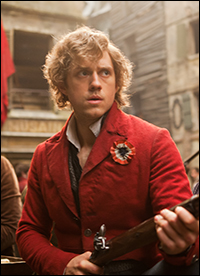 |
|
| Aaron Tveit | ||
| Photo by Universal Pictures |
One final note about color in the film: There is an additional dollop of magical blue — a pale purple, really — in Hooper's vision for the famous gate scene in which Eponine guides Marius to the home of Cosette. The arbor outside Cosette's bed chamber fairly drips with creamy violet-colored wisteria, signifying the ripe and ready pluckability of her love. When she sings "A Heart Full of Love" with Marius, separated by that high gate that is so iconic in the stage musical (original directors Trevor Nunn and John Caird were masters of visual tension), Hooper places an opalescent butterfly between them, alighting on the gate and spreading its wings with all the tentativeness of a first kiss. Of all the special effects in this $61 million film — which boasts a lot of camera tricks and computerized cityscapes — that tiny insect is one of the most breathtaking.
Look for more notes and comment about the "Les Misérables" movie in the next Playbill Stage to Screens column.
(Kenneth Jones is managing editor of Playbill.com. He penned Playbill's "Smash Report" columns that recapped the first season of the NBC musical series "Smash." Follow him on Twitter @PlaybillKenneth.)
View highlights from "Les Miz" here:









